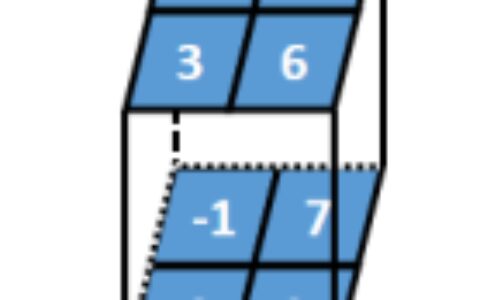文章链接: http://blog.csdn.net/yhl_leo/article/details/50624471
# load MNIST data import input_data mnist = input_data.read_data_sets("Mnist_data/", one_hot=True) # start tensorflow interactiveSession import tensorflow as tf sess = tf.InteractiveSession() # weight initialization def weight_variable(shape): initial = tf.truncated_normal(shape, stddev=0.1) return tf.Variable(initial) def bias_variable(shape): initial = tf.constant(0.1, shape = shape) return tf.Variable(initial) # convolution def conv2d(x, W): return tf.nn.conv2d(x, W, strides=[1, 1, 1, 1], padding='SAME') # pooling def max_pool_2x2(x): return tf.nn.max_pool(x, ksize=[1, 2, 2, 1], strides=[1, 2, 2, 1], padding='SAME') # Create the model # placeholder x = tf.placeholder("float", [None, 784]) y_ = tf.placeholder("float", [None, 10]) # variables W = tf.Variable(tf.zeros([784,10])) b = tf.Variable(tf.zeros([10])) y = tf.nn.softmax(tf.matmul(x,W) + b) # first convolutinal layer w_conv1 = weight_variable([5, 5, 1, 32]) b_conv1 = bias_variable([32]) x_image = tf.reshape(x, [-1, 28, 28, 1]) h_conv1 = tf.nn.relu(conv2d(x_image, w_conv1) + b_conv1) h_pool1 = max_pool_2x2(h_conv1) # second convolutional layer w_conv2 = weight_variable([5, 5, 32, 64]) b_conv2 = bias_variable([64]) h_conv2 = tf.nn.relu(conv2d(h_pool1, w_conv2) + b_conv2) h_pool2 = max_pool_2x2(h_conv2) # densely connected layer w_fc1 = weight_variable([7*7*64, 1024]) b_fc1 = bias_variable([1024]) h_pool2_flat = tf.reshape(h_pool2, [-1, 7*7*64]) h_fc1 = tf.nn.relu(tf.matmul(h_pool2_flat, w_fc1) + b_fc1) # dropout keep_prob = tf.placeholder("float") h_fc1_drop = tf.nn.dropout(h_fc1, keep_prob) # readout layer w_fc2 = weight_variable([1024, 10]) b_fc2 = bias_variable([10]) y_conv = tf.nn.softmax(tf.matmul(h_fc1_drop, w_fc2) + b_fc2) # train and evaluate the model cross_entropy = -tf.reduce_sum(y_*tf.log(y_conv)) train_step = tf.train.AdagradOptimizer(1e-4).minimize(cross_entropy) correct_prediction = tf.equal(tf.argmax(y_conv, 1), tf.argmax(y_, 1)) accuracy = tf.reduce_mean(tf.cast(correct_prediction, "float")) sess.run(tf.initialize_all_variables()) for i in range(20000): batch = mnist.train.next_batch(50) if i%100 == 0: train_accuracy = accuracy.eval(feed_dict={x:batch[0], y_:batch[1], keep_prob:1.0}) print "step %d, train accuracy %g" %(i, train_accuracy) train_step.run(feed_dict={x:batch[0], y_:batch[1], keep_prob:0.5}) print "test accuracy %g" % accuracy.eval(feed_dict={x:mnist.test.images, y_:mnist.test.labels, keep_prob:1.0})
训练结果准确率为0.9318
训练优化方法修改为梯度下降算法:
#train_step = tf.train.AdagradOptimizer(1e-4).minimize(cross_entropy) train_step = tf.train.GradientDescentOptimizer(1e-3).minimize(cross_entropy)
训练结果准确率为0.9925
本站文章如无特殊说明,均为本站原创,如若转载,请注明出处:mnist深入–用卷积神经网络改善mnist - Python技术站

 微信扫一扫
微信扫一扫  支付宝扫一扫
支付宝扫一扫 
